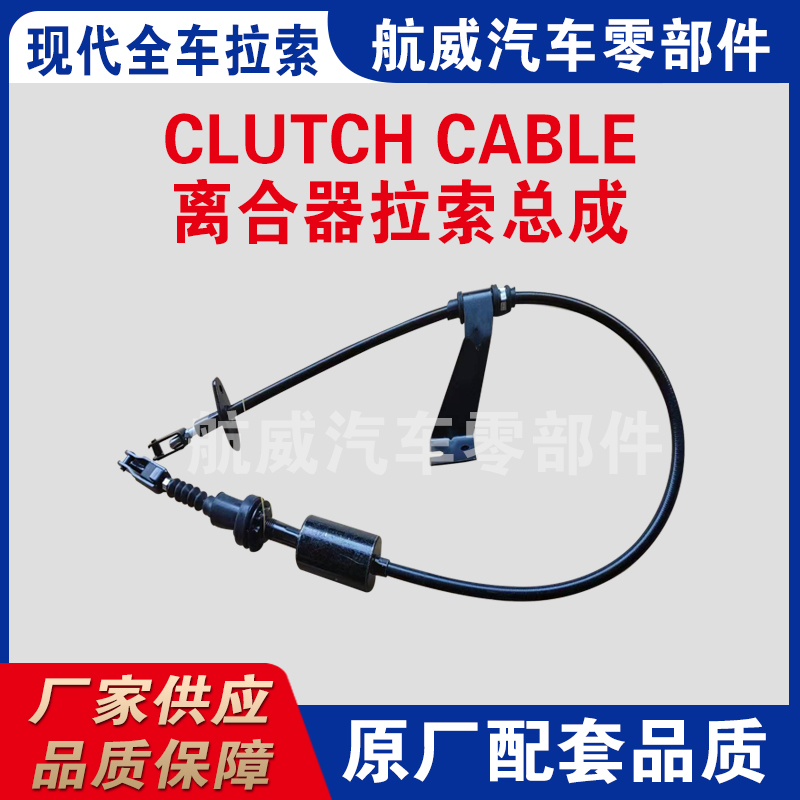Understanding the Function and Importance of Accelerator Pedal Cables in Vehicles
Understanding the Accelerator Pedal Cable Functionality and Importance
The accelerator pedal cable is an essential component of a vehicle's throttle control system, playing a crucial role in the functionality and performance of internal combustion engines. This cable connects the accelerator pedal to the throttle body, facilitating the driver's ability to control the engine's power output in response to their driving needs. While seemingly simple, this component is integral to achieving optimum speed, acceleration, and overall vehicle performance.
The Mechanism of the Accelerator Pedal Cable
When a driver presses down on the accelerator pedal, the attached cable pulls on a lever at the throttle body. This mechanical action opens the throttle, allowing more air and fuel to enter the engine—resulting in increased power output. Conversely, when the driver releases the pedal, the cable retracts, closing the throttle and reducing power. This direct link between the driver’s input and the engine's response creates a critical feedback loop, allowing for a seamless driving experience.
Over the years, the accelerator pedal cable has evolved from traditional mechanical setups to more sophisticated systems. Some modern vehicles employ electronic throttle control (ETC), which eliminates the need for a physical cable. Instead, sensors detect the position of the pedal and send electronic signals to the engine control unit (ECU), adjusting the throttle accordingly. Although cable-driven systems are less common in newer vehicles, understanding their design and operation remains important, especially for enthusiasts and mechanics working on older models.
Material and Design Considerations
The construction of the accelerator pedal cable is engineered for durability and responsiveness. Typically made from high-strength steel or other resilient materials, the cable is designed to withstand constant tension and friction without stretching or breaking. The cable housing is often lined with a lubricant to reduce wear and prevent binding, ensuring smooth operation.
accelerator pedal cable

Additionally, the design often includes protective features to shield the cable from environmental damage. Rubber or plastic coverings can provide insulation against heat and moisture, thereby enhancing the cable's longevity. For vehicles exposed to harsh conditions, such as off-road scenarios or cold weather, these protective measures become even more critical.
Common Issues and Maintenance
Like any mechanical component, accelerator pedal cables can experience wear and tear over time. Common issues include fraying, stiffness, or complete failure. Symptoms of a failing cable may include erratic acceleration, a sticking pedal, or an overall lack of responsiveness. Recognizing these early warning signs is essential for drivers to prevent potentially dangerous situations.
Regular maintenance can extend the life of the accelerator pedal cable. This includes inspecting the cable for signs of damage or wear, lubricating moving parts where necessary, and ensuring that the connections at both the accelerator pedal and throttle body are secure. For older vehicles, replacing a worn or frayed cable can significantly improve performance and ensure safe driving conditions.
Conclusion
In summary, the accelerator pedal cable, despite its seemingly simple design, is a vital element of a vehicle's performance and safety. Understanding its role helps drivers appreciate the intricacies involved in vehicle control and enhances their overall driving experience. For mechanics and automotive enthusiasts, familiarity with the accelerator pedal cable’s construction, potential issues, and maintenance is crucial for ensuring that vehicles remain in optimal condition.
As technology advances and vehicles increasingly incorporate electronic systems, the basic principles governing accelerator control remain relevant. Whether through cable-driven systems or electronic throttle control, the driver’s intent to manage speed and power continues to be a fundamental aspect of the automotive experience. Thus, the accelerator pedal cable, while it may be evolving, will always retain its importance within the broader context of vehicle dynamics and driver control.
-
Workings of Clutch Pipe and Hose SystemsNewsJun.04,2025
-
The Inner Workings of Hand Brake Cable SystemsNewsJun.04,2025
-
The Secrets of Throttle and Accelerator CablesNewsJun.04,2025
-
The Hidden Lifeline of Your Transmission Gear Shift CablesNewsJun.04,2025
-
Demystifying Gear Cables and Shift LinkagesNewsJun.04,2025
-
Decoding Clutch Line Systems A Comprehensive GuideNewsJun.04,2025
